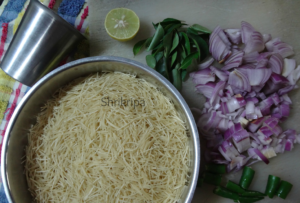Millets are “no glutenous” flours. To attain soft-edged, easy to roll roti’s, we need to prepare the proper, pliable dough. When you want to prepare roti dough, you can either add little rice flour or whole wheat flour to millet flour. Even though it is not a traditional method, it works out just fine to my family needs. It remains soft even after cooling, easy to make and works out just perfect for any rolls or wraps.
How: First, make a porridge of millet flour or a mixture of two to three millet flours by boiling water, salt,0ne a spoon of any cooking oil. When it starts boiling, add millet flour and cook until it is glossy.
When it is cool, add rice or whole wheat flour and make a dough. In this way, you would get very soft pulkas.

How I usually do is –
Ingredients:
Ragi flour – ½ cup
Bajra flour – ½ cup
Jowar flour – ½ cup
Whole wheat flour- as needed
Water- 2 cup
Salt
Oil -1 tsp.
Method:
-Take two cups of water, add oil, salt and boil. Now add millet flours and keep this for 2 to 3 minutes or until it cooks. Now remove from the flame and keep aside.

-When it is ready to handle, add whole wheat flour, make a firm ball like Chapati dough. Cover and keep this aside for 10 minutes for resting.

-Then start making a little thicker Chapati than the regular Chapati/ pulka’s and cook both the sides and place it on fire to fluff and serve either as it is or by applying ghee or oil.
NOTE:
-To make Glutenfree roti, add rice flour instead of whole wheat flour.
-To make an initial porridge, you can use the microwave as well.












